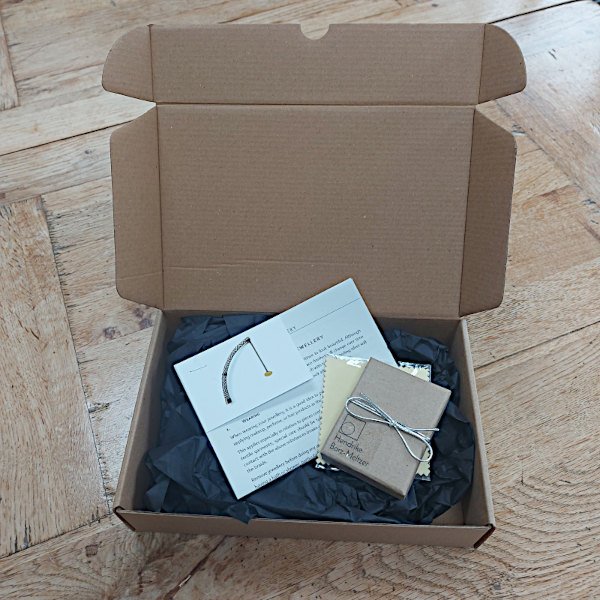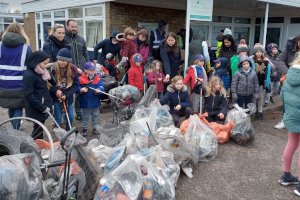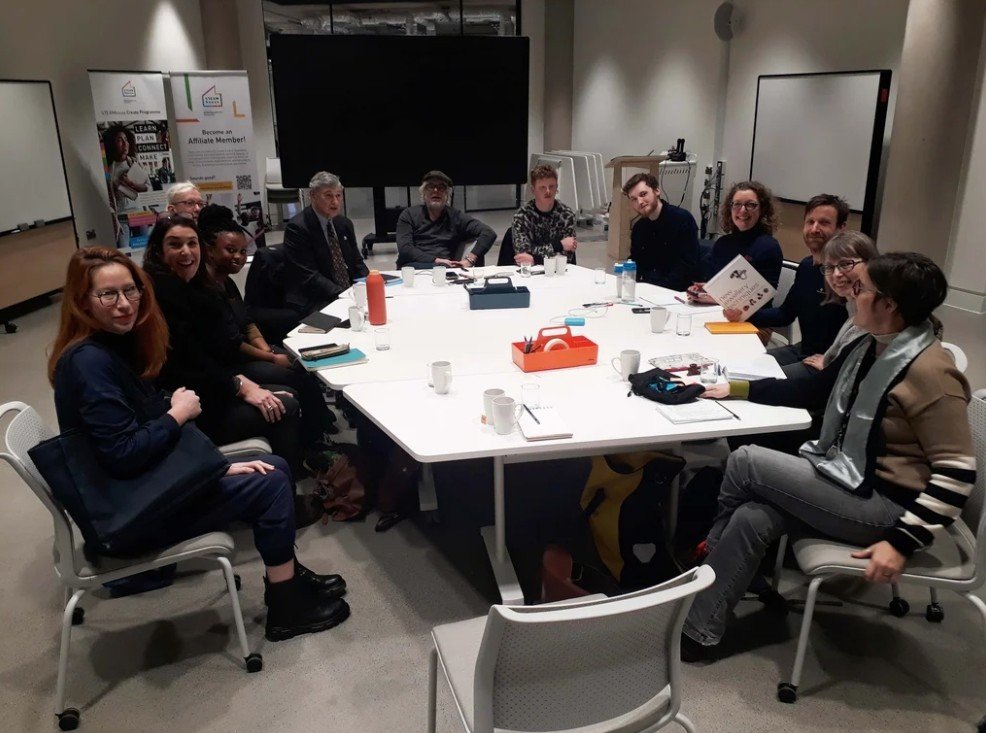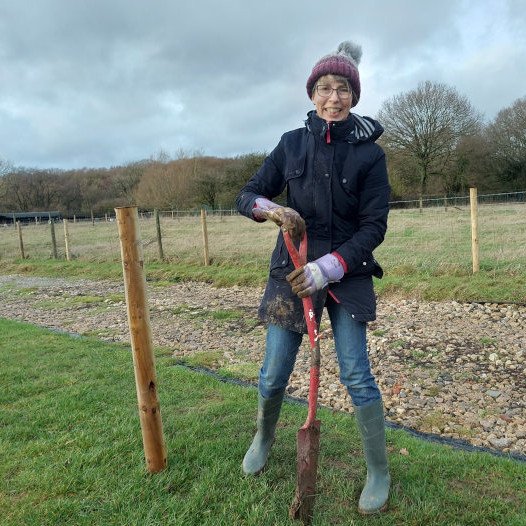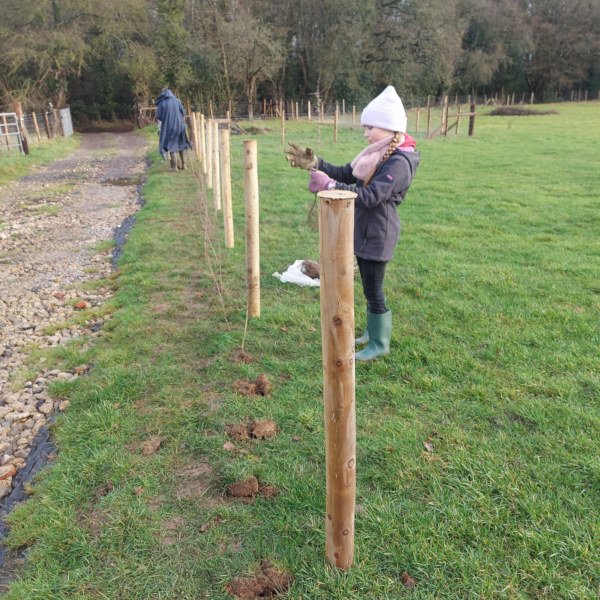Vision, Values & Mission
Vision
Women should feel proud and confident within their own bodies and about who they are.
When wearing a piece of jewellery women should feel connected to the piece – through its story, a memory or emotion – and the piece should celebrate and underline the uniqueness of its wearer.
The story of each piece includes the materials of which the piece is made but also how it came into being, the ideas and processes that led to its making.
In order to be truly beautiful and to inspire the confidence and pride of its wearer, the jewellery must also be well-made and be outward looking, by addressing ethical and environmental concerns during its creation.
Values
The jewellery I make has a clear, understated, minimal aesthetic and is the result of a process that can be spontaneous or quite linear. It involves a playful experimentation with shapes, techniques and materials, drawings, model making and a translation of these drawings or models into actual pieces of jewellery.
I am passionate about this process and find it the most exciting part of my whole work. All the pieces are hand-made by myself in my workshop where I aim for highest quality, attention to detail and consideration and care for the planet and the people who inhabit it.
Environmental sustainability and an ethical working practice are paramount considerations in my practice. I believe that everyone must work towards tackling the climate emergency and each person can contribute in their area of expertise and influence. Within my own work I aim to do this in the following areas:
1. Materials
2. Chemicals
3. Working practices
4. Packaging & Stationary
5. Giving Back
Read below more on each area.
Mission
I want to inspire women to feel elegant, sophisticated and guilt-free when they wear a piece of my unique jewellery.
The content of this Section is a work in progress. It provides information regarding the materials and processes I use in my work, especially in respect of their ethical and environmental impact.
Materials
Argentium Silver, January 2025: As indicated below, I used Argentium silver for some years until I stopped using it June 2020. I have recently contacted Argentium International again to ask for updates regarding their use of recycled silver in the manufacturing process of Argentium silver. I was pleased to find out that out of the three manufacturers of this metal (listed below), two are now committed to using 100% recycled silver in their manufacturing process, whilst the third is largely using recycled silver. The three companies are:
LEGOR GROUP: https://legor.com/en/company/
They state the following on their website: “To ensure ethical and sustainable production from supplier to end consumer, we have decided to make our products entirely from precious metals from 100% recycled sources and selected non-precious metals from recycled sources, and to have this fact certified.” https://legor.com/en/care/
BAUER WALSER: https://www.bauer-walser.com/products/precious-metal-semi-finished-products/argentium-silver
This company simply states that: “Argentium is environmentally friendly because no chemicals are needed to strip it.
It is made from recycled silver.”
Both companies, Legor and Bauer Walser, are certified by the Responsible Jewellery Council.
GSM METALS: http://www.gsmmetals.com/eco-friendly-metal.html
This company states on their website: “Commitment to environmental protection and sustainable development is a core business value at GSM. As a standard practice, GSM strives to recycle as much internal clean scrap as possible. When virgin metal is required, GSM utilizes material from Kennecott Utah Copper and the Royal Canadian Mint. Both sources are well-known for their ethical, environmentally friendly refining and mining processes.” (See the above link for this quote.)
Given the above, I am more confident about the sourcing of Argentium silver and have decided to use it again in my work, alongside recycled sterling silver and Single Mine Origin (SMO) gold.
News - New Argentium Silver Alloy: During my research I was also excited to find out that the company have developed a new Argentium silver alloy. Argentium 940 “addresses the matter of heat distortion at higher temperatures” and I am looking forward to trying out the new material. For more information on Argentium silver and it its advantages compared to Sterling Silver, please click here or go to https://www.argentiumsilver.com/
Single Mine Origin (SMO) Gold, July 2021: Whilst my aim remains to using Fairmined and Fairtrade Gold, I have thus far only used small amounts of gold in my work which did not warrant the complex registration process and costs involved. In my new series of pieces (Autumn 2021) I included some more gold. Looking into various options I decided to purchase Single Mine Origin (SMO) gold for now. Please click here for further information. The gold that was used in my work can be traced back to the Hummingbird Resources Plc's Yanfolila mine in Mali where it was produced in January 2020.
To quote from the SMO website:
“Consumers are increasingly concerned about the provenance of the products they buy. Price is important, but so too is knowing that a product is of a high quality and has been responsibly sourced.
Only a tiny percentage of precious metal utilised in the jewellery or investment sectors has a traceable source of origin and having the reassurance of detailed provenance always attracts a substantial price premium.
SMO certification and stamping provides an auditable chain of custody for every gram of gold and peace of mind that this metal has been produced within strict parameters of corporate, social and environmental responsibility.
SMO denotes gold that has been produced by a legitimate mining operation which holds no ties to conflict, where miners are being paid a just wage under secure employment. Furthermore, SMO strives to ensure that the communities living locally to the gold source are benefitting from sustainability initiatives carried out by the mining operation. Such initiatives include programmes centred on education, healthcare, safe drinking water and agricultural prosperity to support a wide number of people.”
Recycled Silver, June 2020: I started using Recycled Silver in my work. Whilst I still believe that Argentium has many advantages, such as its greater tarnish resistance, it good fusing or heat hardening properties, only a proportion of the silver used in creating this alloy comes from recycled sources (See below for more details on Argentium). As such, I have decided to switch to using recycled silver for now, in the hope that Argentium will at some point be produced by only using recycled silver.
Recycled 24ct Gold Foil, Autumn 2017: The 24ct gold foil used in the Keum-Boo process is 13 microns thick (0.013mm) and is sourced from 100% recycled gold. Aida Chemical Industries Co. Ltd is recognised as Conflict-free Smelters which conforms to international guidelines set by CFSI (Conflict Free Sourcing Initiative). They extract the gold from scraps of industrial use (ie. electric parts, plating), jewellery and dentistry. It is not sourced from conflict mines.
2. Chemicals:
Jeweller’s Pickle: Instead of using the hazardous, toxic and corrosive ‘safety pickle’ for removing surface deposits after soldering, I use citric acid which is biodegradable and kinder to your health. Cilck this link for instructions on how to make this type of pickle. Also check out all the other valuable resources on the ethical making website.
Cleaning of Metal: When cleaning metal, in preparation of doing the Keum-Boo technique, I use Baking soda and water to clean the metal.
3. Working Practice
Keum-Boo: Instead of using gold-plating in my work to add gold to my pieces I am using the Korean technique of Keum-Boo. I came across this technique when I was searching for alternative methods of adding gold to silver to create patterns and to avoid gold-plating - a technique that involves many harmful chemicals. Keum-Boo is the ancient Korean technique of heat-bonding 24ct gold to silver. It does not involve any chemicals as the virtually pure gold attaches to the silver through the application of heat and pressure. The gold foil I use is 100% recycled. See above.
Rags, Towels and Cloths: Instead of using paper towels I have a number of washable rags, cloths and towels in the studio which are periodically washed and re-used.
Health & Safety: I am a strong believer in creating a healthy and safe work environment. When I teach I also impart these principles to my students. In my own work I wear protective equipment when engaging in processes which could be detrimental to health - such as wearing a respirator and goggles when using the pendant motor or polishing machine.
4. Packaging / stationary
Stationary
Summer 2020: Wherever possible I try to reduce the amount of printing that needs to be done. I have now switched to using 100% recycled paper as well as using paper masking tape.
Packaging
2021: Having researched and purchased what I thought would be good alternatives for jewellery boxes, made from recycled Kraft paper, I sadly realised only after receiving them, that the boxes were not fully made from recycled paper, but rather a FSC 70% mix. As I had them printed with my logo I could not return them, so shall obviously use them up.
FSC 70% means: “When produced under the 'percentage system', a product must contain a minimum of 70% FSC-certified input and/or recycled input; the rest (maximum 30%) must be controlled wood.”
The black inserts in these boxes are likewise made from FSC certified cardboard, with a velvety top-coat which is made from viscose, a natural by-product from wood production. By using them I am able to avoid using foam inserts at least in some of my boxes.
2016: My packaging consists of boxes made from recycled Kraft paper. As yet I have not been able to find an alternative to the foam inserts within these boxes but am constantly on the lookout for some. If you know of any - do let me know!
5. Giving Back:
February 2023: My daughter’s school organised a litter pick in the local area and it was great to see so many families turn up and help. In 1 1/2 hours we managed to collect over 60 bin bags, sorted into what could still be recycled and that which couldn’t. It is sad to see though what people feel free to just throw away.
January 2023: I was invited by the Crafts Council to take part in a round-table discussion on the subject of environmental sustainability in the precious metal sector. I was very excited to have been invited and the meeting took place last week, 25th January 2023 in Birmingham at the STEAMhouse. (See my Blog Jan 2023 for more details.)
Dec 2022, Hedge-Planting: My daughter and I helped a local hedgehog charity plant hundreds of shrub saplings between Christmas and New Year. We were tired afterwards!
Teaching, since 2018: I have been teaching jewellery making since 2018 and enjoy passing on my enthusiasm of making to others. I believe passionately that engaging children and adults in craft can have a positive impact on their mental health, improve their well-being and increase feelings of self-worth. I therefore donated money to the Arts Council Initiative Let’s Create Packs in 2020 which focussed on providing children with art equipment.
2018-2020: Through my long-standing involvement with a London-based charity (The Breslaff Centre), I also taught numerous craft courses to refugees and children from disadvantaged backgrounds in various local organisations, including the Red Cross.
Tree-planting: In 2019, I donated some of my proceeds from my HDPE/HOPE collection to the Trees For Life charity. My daughter and I also grew various trees from seed in 2020 and 2021 which we donated to our local school to plant. This is an area I am going to work on to form a stronger relationship with a tree-planting charity and hopefully donate more regularly to.
Private support of charities: I privately also support some organisations through monthly donations, including Greenpeace, Amnesty International and The Wildlife Trust.
Argentium silver
Between 2016-2020 I was only using Argentium® Silver which has various advantages over traditional sterling silver, such as a brighter & whiter colour, high tarnish resistance, fire scale resistance and hardness.
Argentium silver alloys are purer than traditional sterling silver. In Argentium the silver content is 93.5% - whereas in sterling silver it is only 92.5%. Argentium silver meets of course all British hallmarking requirements.
In Argentium silver the traditional alloy (92.5% silver + 7.5% copper) is modified by removing some of the copper and adding the metalloid germanium which gives it its additional qualities. ARGENTIUM® is a registered trademark of Argentium International Limited and their official logo, the winged unicorn (see image), is used as part of the hallmarking on all my jewellery which contain this metal.
For further information on Argentium, please visit their website.
Environment & Ethical Aspect of Argentium
In terms of its ethical & environmental impact Argentium sources its silver from manufacturers which are approved by the Responsible Jewellery Council (RJC). The RJC "Code of Practices addresses human rights, labour rights, environmental impact, mining practices, product disclosure and many more important topics in the jewellery supply chain."
The following two manufacturers provide the silver for Argentium in the European and Eastern hemisphere:
Legor Group and Pandora Alloys. Both companies are registered with and adhere to the RJC Code of Practice. Legor Group is further committed to only using recycled silver in their production processes. Pandora Alloys has also achieved the Chain of Custody Certification of the RJC. Please refer to the Responsible Jewellery Council website for further information.














